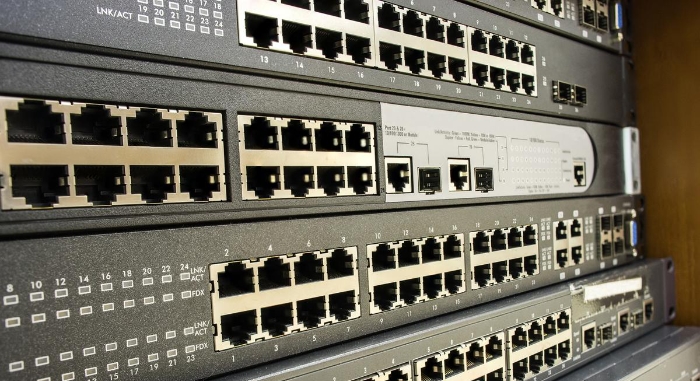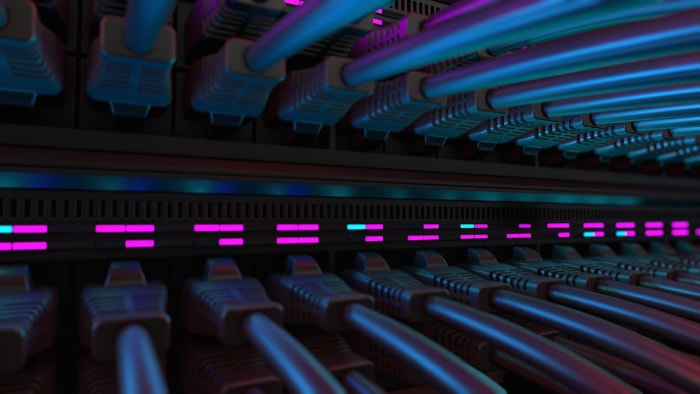Core Switches: The Pillar of Network Infrastructure

Understanding the nuances of network infrastructure is crucial for anyone keen on mastering the field of information technology. Core switches form an integral part of this framework, ensuring efficient communication and data transfer between multiple networks.
Often regarded as the backbone of a computer network, they serve as a high-capacity conduit for connecting lower-tier switches and various network devices.
Understanding Network Switches
Network switches are fundamental devices used in the construction of most computer networks. They operate at the data link layer (Layer 2) or the network layer (Layer 3) of the OSI (Open Systems Interconnection) model, facilitating the communication of devices on a network by receiving, processing, and forwarding data to the target device.
Types of Network Switches
Different network environments require different types of switches, each with their own unique characteristics. Understanding the different types can help determine the best choice for a specific network setting.
Unmanaged Switches
Unmanaged switches are basic plug-and-play switches with no configurable options. These switches are typically used in home networks or in businesses where there’s no real need for complex settings.
Managed Switches
Contrary to unmanaged switches, managed switches allow for more complexity and customization. They can be configured to adjust speeds, combine ports, and set up virtual LANs (VLANs).
Additionally, they provide features like Quality of Service (QoS), which allows for priority setting for types of traffic, and SNMP (Simple Network Management Protocol), which provides statuses of connected devices.
Smart Switches
Also known as hybrid switches, smart switches provide a middle ground between managed and unmanaged switches. They are more affordable than fully managed switches and offer certain configurable options.
While they do not offer the full range of management features that managed switches do, they can meet the needs of smaller businesses that require some level of network management.
Core Switches Explained
Core switches, as the name suggests, form the core or central part of a network, connecting several other switches in a network infrastructure. These switches are high-capacity, usually handling the greatest amount of traffic compared to other switches in the network.
They primarily focus on speed and reliability, providing a fast and stable path for data transmission across the network.
Comparison with Other Types of Switches (Edge and Distribution Switches)
While all switches play a crucial role in network management, they function differently depending on their position in the network hierarchy.
- Edge switches, or access switches, connect end-user devices like computers and printers to the network. They operate at the outer edge of the network.
- Distribution switches connect edge switches to core switches. They manage traffic between different segments of the network and apply policies defined in the network.
- Core switches, as already mentioned, are at the center of the network, linking distribution switches together, or connecting the user-facing switches to servers or other major network resources.
Highlighting the Advanced Features of Core Switches
Core switches come equipped with advanced features to support their central role. They support high bandwidth to accommodate substantial data traffic, ensuring fast data transmission.
Most core switches are layer-3 (network layer) devices, meaning they can route data based on IP addresses, not just MAC addresses, providing a greater degree of control and efficiency in large networks.
Furthermore, they come with redundancy features to minimize downtime, ensuring that a failure of one part doesn’t bring the whole network down. For instance, dual power supplies and hot-swappable modules are commonly seen in these types of switches.
Key Functions of Core Switches

Core switches play a fundamental role in the operation of a network. By providing a backbone connection point for multiple switches and network devices, they ensure efficient data transfer and communication throughout the network.
Aggregating Data
At the heart of their functionality, core switches aggregate data from multiple network devices via distribution switches. This is essential for consolidating information from various parts of the network and efficiently managing the flow of data traffic to ensure high-speed data transfer.
Routing and Switching
While most switches operate primarily at the data link layer (Layer 2) of the OSI model, core switches often operate at both the data link and network layers (Layer 3). This allows them to switch data packets within the network and also route data packets between different networks.
This dual capability makes them a versatile tool in the network infrastructure.
Ensuring Network Security
Core switches also play a pivotal role in network security. They provide features like Access Control Lists (ACLs), which help control inbound and outbound traffic and guard against potential threats.
Additionally, they can implement security policies across the network, further safeguarding the data traffic.
High-speed Data Transfer
The high capacity of core switches enables high-speed data transfer across the network. They come with numerous ports and high-speed backplane, enabling them to manage substantial traffic.
This is especially crucial in large organizations where the volume of data transferred can be immense, and the need for speed is essential to maintain operational efficiency.
Core switches’ functionalities highlight their indispensable role in network architecture. By ensuring data aggregation, routing, security, and high-speed transfer, they significantly contribute to the overall performance and efficiency of a network.
Importance of Core Switches in Network Design
The hierarchical design of modern networks demands the presence of core switches. Their inclusion in a network infrastructure brings numerous benefits, improving performance, efficiency, and scalability.
Hierarchical Network Model Overview
The hierarchical network model is a three-layered design that streamlines network planning and implementation. The three layers – Core, Distribution, and Access – each have their unique roles, facilitating a more organized and scalable network structure.
Position and Role of Core Switch in the Hierarchical Model
In the hierarchical network model, the core layer, where the core switch resides, is the backbone of the network. It is the network’s high-speed switching backbone, connecting the distribution layer devices, which in turn connect to the access layer devices where end-users are located.
The primary role of the core layer, and hence the core switch, is to provide fast and reliable transportation of data across the network.
Importance of Core Switches for Scalability and Reliability
Core switches play an integral role in scaling and maintaining network reliability. As the network expands, additional switches and devices can be attached without disrupting the core operations of the network, thanks to the central role played by the core switch.
Moreover, core switches often have redundancy features that maintain network uptime even in the event of a failure. By enabling load balancing and failover capabilities, they ensure there’s no single point of failure, thus increasing the overall reliability and uptime of the network.
In essence, core switches are pivotal in the network design for their role in ensuring swift data communication, facilitating scalability, and improving network reliability.
Choosing the Right Core Switch
Deciding on the right core switch for your network is a crucial decision, as it directly impacts the network’s efficiency, reliability, and scalability. Several factors should be considered to ensure you choose the best fit for your specific needs.
Factors to Consider
Network Size
The size of your network is a significant determinant when selecting a core switch. Larger networks with multiple switches and high data traffic will require a more powerful core switch with higher capacity and more advanced features.
Budget
Cost is always a consideration. High-end core switches with advanced features can be pricey, but they offer better performance and reliability. It’s essential to balance the need for advanced features with the available budget.
Future Network Growth Plans
The scalability of your network should also be a consideration. If you anticipate significant growth in your network, choosing a core switch that can accommodate this growth will be vital. Consider the switch’s capacity to handle additional devices and increased data traffic.
Conclusion
Core switches truly are the heartbeat of any network infrastructure. They facilitate rapid data aggregation, efficient routing and switching, and ensure network security and reliability.
Their strategic position within the hierarchical network model gives them a significant role in managing network traffic, thereby guaranteeing high-speed data transfer that is vital for the smooth operation of an organization.
Choosing the right core switch is crucial. It requires a thorough understanding of your network size, budget considerations, and future growth plans. There is no one-size-fits-all solution, and the best choice will depend on individual network needs and contexts.
As technology continues to evolve, we can anticipate further developments and innovations in the features and capacities of core switches. It’s clear, however, that whatever the changes, the core switch will remain at the heart of network infrastructure design, underscoring its enduring importance in the efficient and scalable functioning of networks.
In wrapping up, core switches are not just essential, but indispensable, working tirelessly in the background to ensure that our data reaches its destination swiftly and securely. This central role underlines the critical part they play in connecting us in an increasingly networked world.


